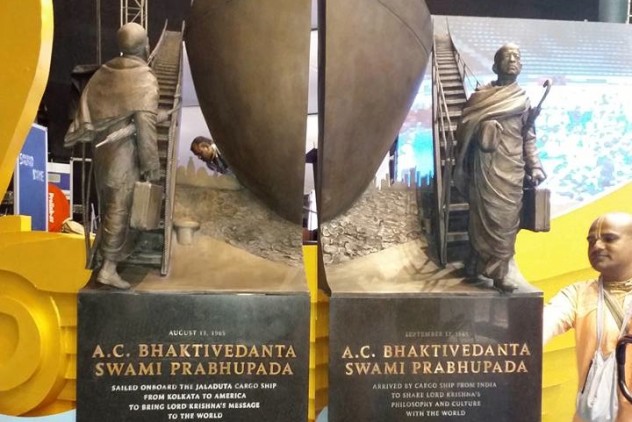ISKCON 50 Meditations: November 1, 2015
By Satsvarupa dasa Goswami | Nov 01, 2015

So far, Prabhupada’s sole strategy had been to seek support from India. It was a plan that would ultimately fail, but Krishna had not as yet revealed that to him or showed him an alternative. Tirtha Maharaj, the president of the Gaudiya Math, had told him that the Math’s Institution funds could not be used for Prabhupada’s mission in America. It was a plain and clear rejection. Yet somehow Prabhupada managed to see a glimmer of hope in his letter and persisted in writing him back describing the building he had found and seeking support. After writing letters to Sumati Morarji with a general description of his activities and trying to indirectly inspire her to help, he had pulled out all the stops and asked her to donate for the building and become famous in history as the pious woman who had started the first temple to “Bala-Krishna” in America. But she hadn’t even written a reply. Prabhupada thought of other possible donors in India. He wrote to Padmapat Singhania, a very wealthy man who was known as a devotee of Dwakanatha-Krishna, but received no reply.
At this time Prabhupada was living alone in New York City with no friends, disciples or financial support. He had found a building in Manhattan that he wanted to purchase and use as a temple, but his only attempt to raise funds was to write rich donors in India and it seemed unlikely they would help. From outside appearances, Prabhupada may have seemed like a lonely, unsuccessful person, but he felt otherwise. He believed firmly that he was living intimately with the Supreme Lord Krishna, and that He was directing His will. Prabhupada wrote later in a Bhagavad-gita purport (16.1-3) that to be a sannyasi one should be unafraid to live alone, without dependence.
“For a sannyāsī, the first qualification should be fearlessness. Because a sannyāsī has to be alone without any support or guarantee of support, he has simply to depend on the mercy of the Supreme Personality of Godhead. If one thinks, “After I leave my connections, who will protect me?” he should not accept the renounced order of life. One must be fully convinced that Kṛṣṇa or the Supreme Personality of Godhead in His localized aspect as Paramātmā is always within, that He is seeing everything, and He always knows what one intends to do. One must have firm conviction that Kṛṣṇa as Paramātmā will take care of a soul surrendered to Him. ‘I shall never be alone,’ one should think. ‘Even if I live in the darkest regions of a forest I shall be accompanied by Kṛṣṇa, and He will give me all protection.’ That conviction is called abhayam, fearlessness. This state of mind is necessary for a person in the renounced order of life.”
Prabhupada felt a close contact with his beloved spiritual master, Bhaktisiddhanta Sarasvati Thakur. There are two ways of associating with the spiritual master, by vapu and vani. Vapu means physical presence and vani means following the teachings. Vapu is temporary and vani is eternal. Prabhupada felt the intimate personal touch of his spiritual master’s instructions that he preach Krishna consciousness in English in the West. He believed his spiritual master was always watching over his actions and guiding him through his vani. Prabhupada in 1965 never felt lonely or depressed or in need. He had powerful, loving well-wishers and they would take care of him. It was just a matter of time before his mission would come to fruition.















